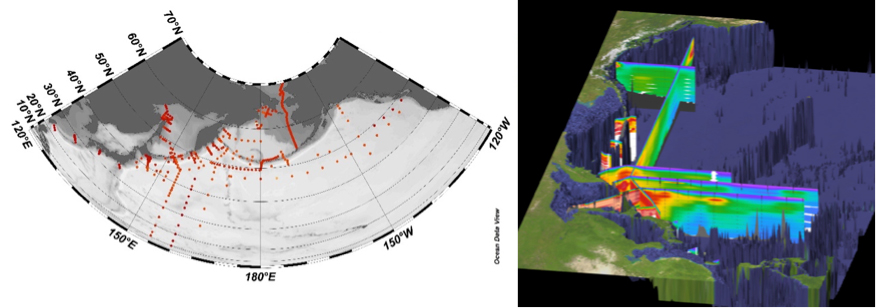Mechanisms driving biological CO2 drawdown in the Subarctic Pacific unraveled
Nishioka and co-authors (2020, see reference below) compiled comprehensive data sets of iron and macronutrients (including new data from GP02 GEOTRACES section line) covering the whole subarctic Pacific Ocean.
Combining these data with physical parameters of vertical mixing, they unraveled the processes that determine the chemical properties of the intermediate water and the uplift of iron (Fe) and nutrients to the main thermocline, which eventually maintains surface biological productivity.
The virtual loop includes the spread of Fe from the Okhotsk Sea via ventilation, the formation of a subarctic intermediate water nutrient pool resulting from a complex game between the intermediate water circulation in this area and the decomposition of particulate organic matter that sinks from the surface productive areas, the main nutrient return path from the intermediate layers to the surface via turbulent mixing and the demonstration that the intermediate water eventually controls biological productivity. This woks alos underlines the importance of marginal seas in fueling the open ocean.

Reference:
Nishioka, J., Obata, H., Ogawa, H., Ono, K., Yamashita, Y., Lee, K., Takeda, S., Yasuda, I. (2020). Subpolar marginal seas fuel the North Pacific through the intermediate water at the termination of the global ocean circulation. Proceedings of the National Academy of Sciences, 202000658. https://doi.org/10.1073/pnas.2000658117
